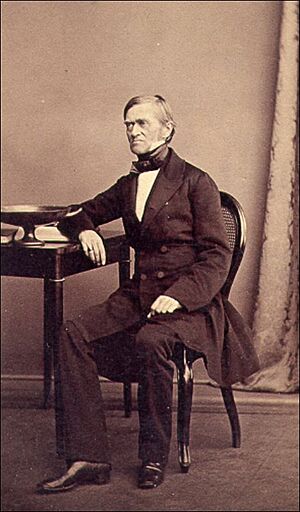Friedrich Wilhelm Eduard Gerhard facts for kids
Friedrich Wilhelm Eduard Gerhard (born in 1795, died in 1867) was an important German archaeologist. An archaeologist is someone who studies human history by digging up old things. Gerhard helped start the first international group for studying ancient objects. He also worked as its secretary.
A Life of Discovery
Friedrich Gerhard was born in a city called Posen. He studied at universities in Breslau and Berlin. He became well-known for his early writings in 1816. Because of this, he was soon made a professor at a school in Posen.
In 1819, he had to leave his job because his eyes became weak. In 1822, he moved to Rome, Italy. He lived there for 15 years.
While in Rome, Gerhard was a main founder of a new group. It was called the Instituto di corrispondenza archeologica. This group started in Rome in 1829. The crown prince of Prussia, Frederick William, helped support it. Other founders included Theodor Panofka and Otto Magnus von Stackelberg. This group was a new way for people from different countries to work together. They also published scientific findings. This idea was inspired by Alexander von Humboldt. Today, this group is known as the German Archaeological Institute. Gerhard worked as the secretary for this new Institute while he was in Rome.
Gerhard returned to Germany in 1837. He was then made an archaeologist at the Royal Museum in Berlin. In the same year, he became a member of the American Antiquarian Society. In 1844, he was chosen to be a member of the Academy of Sciences. He also became a professor at Berlin University.
He passed away in Berlin.
What He Achieved
Friedrich Gerhard made a big difference in archaeology. He helped by publishing information about important groups of ancient monuments. He also helped to sort and classify these findings in an organized way. This work was very important at the time. Many new ancient vases and other small objects were being found. These came from places like Vulci in Etruria.
Gerhard was not mainly interested in the artistic beauty of ancient items. Instead, he focused on their history and how they were used. It is interesting that he was drawn to Etruscan art. This type of art was often not as interesting to artists.


